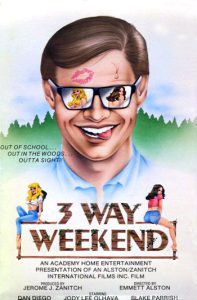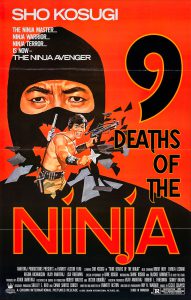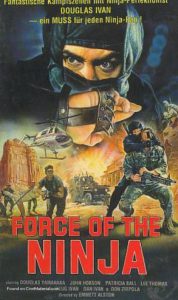Attack of the Robots / Cartes sur table (1966) by #JesúsFranco/#JessFranco#EddieConstantine #FrançoiseBrion #FernandoRey
"ruthless, hideous humanoids, part of a diabolical plan to conquer the universe!"#SciFi #Spy #Comedy#NotQuiteClassicCinema pic.twitter.com/jhgcvuGDGh
— Angus Kohm (@AngusKohm) January 23, 2021
I became interested in Jess Franco while studying film at university. That may be a sentence that’s never been written before. Let me explain… I did not study Jess Franco, or his films, at university. I’m quite sure that none of my professors would have considered Jess Franco’s films to be worthy of study. They may have been wrong about that, but that’s beside the point. Franco was not taught alongside Fellini, Truffaut, Antonioni, and Scorsese. However, I did write a major essay for one of my classes that focussed on the Women In Prison genre – not exactly a typical FIlm Studies topic, either, but that’s what attracted me to it – and that’s how I became aware of Jess Franco and his strange oeuvre.
The story of my relationship with the Women In Prison genre is one I will have to save for another day. Suffice it to say that I randomly rented a Jess Franco movie called Hellhole Women (1981), and then later read about it in what would become one of my favourite books, Video Trash & Treasures Volume II by L.A. Morse. It was, in fact, part of a mini section called Jess’s Jungle Frolics. The overarching chapter was called HOT CAGES, NAKED CHAINS: A Cell Block of Women Behind Bars. One of my fellow film students, and a connoisseur of cinematic trash, had recommended that I buy the book and read this chapter when he found out my major essay was about the WIP genre.
In the mini-section, Morse first reviews Women In Cell Bloc 9 (1978), noting that it contains “what is probably the only all nude jailbreak on film”. Then, in his review of Hellhole Women, Morse says:
“While it must have been a challenge to top the all nude jailbreak, old Jess was not daunted, and here provides us with an all topless prison camp — inmates, guards, and dragon-lady warden included.”
When my friend Ian and I first watched Hellhole Women, we recognized it as a crazy, over-the-top sleaze fest that had a lot of camp humour value. We did not know anything about the makers of the film. Thanks to L.A. Morse, I now knew that the genius behind it was Jess Franco, and that he had made other must see cinematic atrocities. In fact, Morse would comment throughout the book every time that Jess Franco was involved in a movie. Admittedly, the comments were most often negative. Morse was not a fan of Franco. He would say things like “old Jess has reached the point where he can effortlessly make nudity and violence seem boring.” But I was intrigued. And the worse the review, the more I wanted to see the movie. I started to rent, and later buy, any movie that I came across that had the name Jess Franco on it (or Jesús Franco as he is sometimes called). Some of them were, by any normal means of evaluation, bad – but there was always something interesting about them. And some of them were downright delightful. One of my favourite surprise discoveries was Kiss Me Monster (1969).
Those were the days of VHS and no internet, so unearthing a rare Franco film did not happen very often. He made over 200 hundred movies in his lifetime, and to this day I still haven’t seen anywhere near all of them. With the right online connections, it’s not as hard to locate the movies now – but it’s also not as special. I haven’t made it a mission to relentlessly download or stream every title in his filmography. I’m old school, so I still get excited when I find a physical copy of one of his movies – and if it’s a reasonable enough deal, I buy it. Of course, if I’m really lucky, someone will give me a nice edition of one of his films on DVD or Blu-ray for my birthday (or some other event for which gifts are appropriate). This is how I came to be the owner of a nice, shiny new Blu-ray of Attack of the Robots AKA Cartes sur table (1966).
This is an early Jess Franco movie, and as such, does not contain the kind of over-the-top sleaze that a movie like Hellhole Women does. However, it does contain a lot of the elements that Franco would remain obsessed with over the course of his 60 (!) year career as a filmmaker. There are scenes in nightclubs, featuring sexy dancers. There are women in chains. Franco appears in the film, as he often did. And this is the first of seven films that Franco made about a private detective character named Al Pereira. In this one, Pereira is played by Eddie Constantine, who was famous for playing a hard-hitting private detective named Lemmy Caution in a series of films. His portrayal of Al Pereira in Attack of the Robots could be seen as more comedic send up of his image from the Lemmy Caution films. Or maybe it was just simple exploitation of a well known actor in a similar role. Who knows? Whatever the case, Constantine is great in this movie – and it’s a shame that it’s the only time he ever got to play Al Pereira. The next time Pereira was seen, he was played by Howard Vernon in Les ebranlées in 1972.
Attack of the Robots is a delightfully fun movie. It’s a post James Bond spy spoof that contains elements of science fiction, as a mad scientist finds a way to essentially turn people into robots if they have Type O blood. It’s beautifully shot and feels like a lush production compared to some of Franco’s later films. Sure, it’s light on sleaze and violence, but it’s played for laughs and for the most part it gets them. If you’re in the mood for something light and fun, with the kind of stylistic flourishes that only a filmmaker like Jess Franco could provide, Attack of the Robots might just be the kind of #NotQuiteClassicCinema that you’re looking for. It’s not too far removed from another Franco film I wrote about a while back, Dr. Orloff’s Monster AKA The Mistresses of Dr. Jekyll (1964). That one is more of a monster movie, and less of a comedy, but it’s also an early, more restrained version of Franco. Each of them, in their own way, make for a mighty fine #FridayNightAtTheHomeDriveIn.




